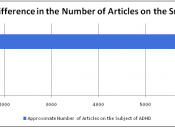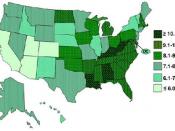Attention Deficit Hyperactivity Disorder (ADHD) or Attention Deficit Disorder without the Hyperactivity (ADD) is a condition of the brain that makes it difficult for children to control their behavior in school and social settings. This condition is also called by various names: hyperactivity, minimal brain dysfunction, minimal brain damage and hyperkinetic syndrome. In 1968 the name was changed to hyperkinectic, meaning wildly fast-paced or excited, reaction of childhood. The focus was on Hyperactive children who had a lot of trouble sitting still in the classroom and getting there work completed (Peter Jaska, Ph. D). In 1980's the name was changed to attention Deficit Disorder because it became recognized that severe attention problems and poor impulse control were characteristic as well. It also became clear that ADHD did not go away in childhood but continue through adulthood. As per Peter Jaska, Ph. D., President, National ADDA, they know now that this genetic, inherited condition is not due to brain damage at all but rather to a variation in how the brain functions.
All of these condition terms describe a condition that affects a child's ability to concentrate, to learn and to maintain a normal level of activity. Peter Jaska, Ph. D., 1999 National ADDA.
A child with ADHD/ADD has difficulty finishing any activity that requires concentration, doesn't seem to listen, impulsive, restless even during sleep, calls out in class and has a hard time waiting his turn in games or groups. The symptoms of ADHD are grouped into two broad categories: inattention and hyperactivity-impulsive behavior. In general, children are said to have ADHD if they show six or more symptoms from each category for at least 6 months. These symptoms must significantly affect a child's ability to function in at least two social settings -- at home and at school. This...


